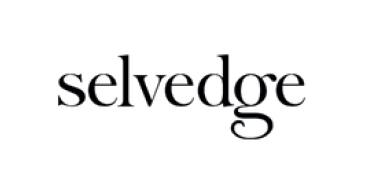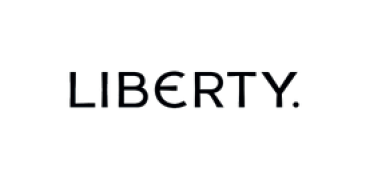Behind The Scenes At Liberty Fabrics London
Anna and I were honoured this year to go behind the scenes with the Liberty Design Team to talk about the new ‘Aesthetic Renaissance’ AW19 collection. We were so excited to have the opportunity to meet Polly who is the Design Manager for Liberty Fabrics. She talked us through the newest seasonal collection and showed us some of the original paintings and drawings, explaining the design process. It was such a privilege to be able to talk about the collection with someone from the team who actually designed the fabrics.
Polly painting Frieze.

Polly told us about the inspiration behind the collection, what it’s like to work within the Liberty Fabrics design and archive team and showed us some of the workings and drawings for many different fabrics within the collection.

The Inspiration Behind the Collection
The collection is inspired by the heritage of Liberty. It looks back to their founder Arthur Lasenby Liberty, his influences and the beginnings of the world-famous shop we see today. The team delved into the Westminster archives, which had fascinating historical documents including books and ledgers with details of Arthur’s merchant travels.
The other resource that is crucial in designing a collection is the Liberty archive where there is an unimaginable amount of material from which to take inspiration. This archive is now digitised and has in excess of 45,000 original drawings and painting to choose from.
They were looking specifically at the time of the Aesthetic Movement (which is within the same time-frame of the Liberty London store being established) in order to glean material for this new autumn winter 2019 collection. Oscar Wilde, William Morris and Rossetti were influential at this time and orientalism, where exotic silks, searched out from the East, were central to the work of Arthur Liberty.

The collection embraces Arthur as traveller, tastemaker and English gentleman sharing stories and anecdotes from the archive and the Liberty legend he created.
As one of the original merchant adventurers, Arthur introduced exotic textiles and artefacts from around the world and, Liberty became central to the development of the Aesthetic Movement in the late 1800’s. The collection is framed by designs drawn from the English countryside that Arthur escaped to when he left the buzz of his London city store.
Designing a Seasonal Collection
Firstly, Polly and the Design Director of Fabrics, Mary-Ann Dunkley work together on a concept, a mood for the season. They use this to inspire and give structure to the research stage of the collection. There is a core team of four designers who produce the seasonal artwork. Each designer proposes ideas, sketches for new designs and results of their exploration of the archive. Regular design meetings give constant focus and structure to the development of the collection.
Polly said “I try and challenge myself to use new techniques and push the boundaries of the artwork. This makes it relevant, and exciting. Arthur Liberty was pushing the boundaries in the work he was doing and so, we try to carry on with this tradition.” Usually 5-7 colour palettes are created every season and for each design, up to 30 colourways can be created for the design team to choose from. The team will then select 8 which go to printing test and a final selection reduces the options to the three most successful fabrics. This process results in the vibrant and contemporary collection you see here.
The collection is based around three themes:
- Artistic Interior
The peacock and sunflower are emblems of the artistic heritage of Liberty and the Aesthetic Movement. These are seen in many designs across the decades within the Liberty archive. There are several prints within this collection that have these motifs at the heart of their design. Isadora, Walter, and Sunflower are wonderful examples of this. Polly said that she drew inspiration from beautiful places such as James Whistler’s ‘Peacock Room’ in the Freer Gallery of Art, Washington DC and Stafford Terrace in Kensington, London, a house frozen in time from the early 1900’s, both amazing in terms of patterns and design.
‘Lemon Grove’ is a vibrant, loose interpretation of William Morris’s ‘Pomegranate’ wallpaper, found on the walls of Stafford Terrace.


‘Rebecca’ – this pattern is from an old Victorian book in the archive with beautiful hand painting. The new print is a delicate botanical with a mixture of trailing flowers, including dahlias, morning glory, lilac, marguerites and berries. It’s named after Rebecca Lasenby, Arthur’s mother.

‘Bluebell’ – this print is based on a Liberty archive painting from the 1900’s. Polly said that when they looked at the Liberty digital archive image it didn’t do the painting justice, so they requested to see the original painting. It is a large painting with such beautiful variety in its tonality. The print has decorative bluebells arranged within ogee shaped stylised stems and is reminiscent of the Art Nouveau period.

- The Travels of Arthur Lasenby Liberty
Another theme that runs through the collection is Arthur Liberty’s travels across the globe searching for beautiful goods. Arthur’s wife was pioneering also – she published photographs from her Kodak camera. Many of the designs are based on travels to Japan and their honeymoon in Paris where he bought some beautiful vases. When they returned he sold them in the Liberty store, which incidentally paid for the whole honeymoon!
‘Legs Eleven’ is a really fun print which has detailed fine line illustrations inspired by an extract discovered in Arthur Liberty’s journal ‘The Treasure Hunt’. He describes ‘lovely saffron coloured coral insects’ during his trip on the Orient Express in 1909.

‘Ceremony’ was inspired by an archive painting and was redrawn with a fine outline and subtle shading. An elegant design with graceful trails of roses and blossom.
- Arthur the Man
The designs in this part of the collection are based on his family life. ‘Emma Louise’ is named after his wife and ‘Nottingham’ pays homage to his father, a lace merchant. Intricate detailing gives the impression of lace while the bold colour gives this design a dramatic contemporary edge.
Arthur also loved the opera even working in costume design, sourcing fabrics from Japan which were used in the kimonos for a production of “The Mikado’ by Gilbert & Sullivan. The Liberty Design team studied the exquisite, heavily embroidered, floral overcoats worn in operas of that period giving inspiration for the design ‘Operetta’. This design was painted in gouache in the London design studio.
Arthur liked to treat his staff well and he used to hold a Sports Day for the whole company in Oxfordshire. Many of the conversational prints like ‘Gymkhana’ and ‘Liberty Lido’ in the collection are based on anecdotes and records of these events.
Polly explained that when she first started as a designer at Liberty they used to work up the pattern repeats by hand and hand painted all of the colourways. Today technology coupled with the tradition of hand painting has revolutionised the design process allowing Liberty to be more experimental with colour and design and to carry on innovating, following the core values of our founder – Sir Arthur Lasenby Liberty.
We loved our Behind the Scenes at Liberty Fabrics London and hope that you have enjoyed reading about our trip.












